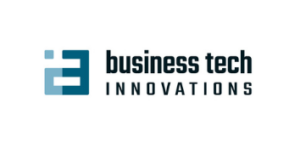
Cloud-native applications are designed and built to fully leverage the benefits of cloud computing. They offer unparalleled scalability, flexibility, and resilience. However, managing the IT infrastructure for these applications requires a specific set of practices to ensure optimal performance and cost-efficiency. This article explores the best practices for managing IT infrastructure in the context of cloud-native applications.
Understanding Cloud-Native Applications
What are Cloud-Native Applications?
Cloud-native applications are software programs developed specifically to operate in a cloud environment. They utilize microservices architecture, containers, and continuous integration/continuous deployment (CI/CD) pipelines to achieve agility and scalability. These applications are built to thrive in the dynamic and distributed nature of the cloud.
Key Characteristics
- Microservices Architecture: Breaks down applications into smaller, independent services that can be developed, deployed, and scaled individually.
- Containers: Packages applications and their dependencies into isolated units for consistency across various environments.
- CI/CD: Enables frequent and reliable code changes through automated testing and deployment.
For a comprehensive overview of cloud-native applications, refer to the Cloud Native Computing Foundation (CNCF).
Best Practices for IT Infrastructure Management
Infrastructure as Code (IaC)
Implementing Infrastructure as Code is crucial for managing cloud-native applications. IaC allows you to define and manage infrastructure using code, enabling version control, automation, and repeatability.
- Tools: Terraform, AWS CloudFormation, and Ansible are popular IaC tools.
- Benefits: Ensures consistency, reduces human error, and accelerates deployment.
For detailed insights into IaC, check out HashiCorp’s Terraform Documentation.
Automated Scaling
Automated scaling is essential to handle varying workloads and ensure efficient resource utilization. Use cloud services that support auto-scaling to automatically adjust compute resources based on demand.
- Horizontal Scaling: Adds more instances of services to distribute the load.
- Vertical Scaling: Increases the capacity of existing instances.
Monitoring and Observability
Effective monitoring and observability are vital for maintaining the health and performance of cloud-native applications. Implement comprehensive monitoring solutions to gain visibility into the infrastructure and application performance.
- Tools: Prometheus, Grafana, and New Relic.
- Practices: Set up alerts for critical metrics, perform regular health checks, and use logging and tracing to diagnose issues.
For more on monitoring tools and practices, visit Prometheus Documentation.
Security Best Practices
Security is paramount in managing IT infrastructure for cloud-native applications. Adopt a multi-layered security approach to protect your applications and data.
- Identity and Access Management (IAM): Use IAM policies to control access to resources.
- Encryption: Encrypt data at rest and in transit.
- Regular Audits: Conduct security audits and vulnerability assessments regularly.
For comprehensive security guidelines, refer to the National Institute of Standards and Technology (NIST) publications.
Case Study: Implementing Best Practices
Example: E-commerce Platform
An e-commerce platform adopts cloud-native principles and implements best practices for IT infrastructure management:
- IaC: Uses Terraform to define and manage cloud infrastructure, ensuring consistent and repeatable deployments.
- Automated Scaling: Implements AWS Auto Scaling to manage fluctuating traffic during peak shopping seasons.
- Monitoring: Deploys Prometheus and Grafana for real-time monitoring and visualization of application performance.
- Security: Enforces IAM policies and encrypts customer data to protect sensitive information.
This approach results in improved performance, reduced downtime, and enhanced security, leading to a better user experience and increased customer satisfaction.
Future Trends in Cloud-Native Infrastructure Management
Serverless Computing
Serverless computing is an emerging trend that allows developers to build and run applications without managing servers. It abstracts infrastructure management, enabling automatic scaling and reducing operational overhead.
- Benefits: Cost-effective, auto-scaling, and reduces infrastructure management complexity.
- Use Cases: Event-driven applications, microservices, and real-time data processing.
AI and Machine Learning Integration
Integrating AI and machine learning with cloud-native infrastructure management can optimize resource allocation, predict failures, and automate routine tasks.
- AI Ops: Uses AI to enhance IT operations, automate anomaly detection, and provide insights for proactive management.
For an overview of these trends, check out Gartner’s IT Infrastructure Predictions.
Optimize Cloud-Native Applications with Actionable Steps
Managing IT infrastructure for cloud-native applications requires adopting best practices such as Infrastructure as Code, automated scaling, effective monitoring, and robust security measures. By following these practices, organizations can ensure their cloud-native applications are performant, scalable, and secure. As the landscape evolves, staying informed about emerging trends like serverless computing and AI integration will be crucial for maintaining a competitive edge.




